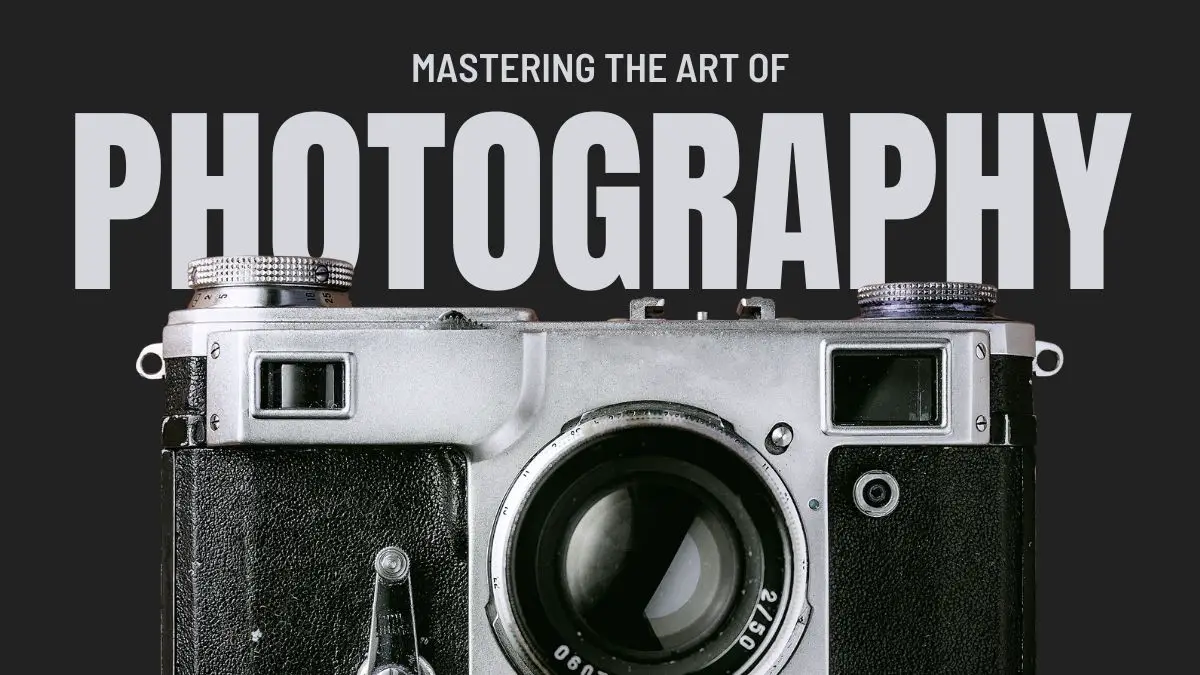Long Exposure Portrait Photography is a captivating genre that combines the art of portraiture with the creative possibilities of long-exposure techniques. Using a slow shutter speed, this style of photography allows for unique and mesmerizing images that capture the essence of the subject and the surrounding environment.
In this comprehensive guide, I will explain the fundamentals of long-exposure portrait photography, from understanding the basics to mastering the art of posing. I will also provide you with essential tips for editing and post-processing. By the end of this article, you will have all the tools and knowledge needed to create stunning portrait images that will leave viewers in awe.
Understanding the basics of long-exposure photography
Before diving into long-exposure portrait photography, it is crucial to have a solid understanding of the basics of the technique. Long exposure refers to using a slow shutter speed to capture an image over an extended period. This technique allows for the blurring of motion and creates unique effects, such as smooth water or streaking lights.
You will need a camera that allows manual control over the shutter speed to achieve long-exposure effects. Additionally, a sturdy tripod is essential to keep your camera steady during the long exposure. Experimentation is vital to finding the perfect shutter speed for each situation, as it will vary depending on the lighting conditions and desired effect.
Gear and equipment needed for long-exposure portrait photography
You will need a few essential pieces of gear and equipment to embark on your long exposure portrait photography journey. First and foremost, a camera with manual control over shutter speed is a must. This will allow you to set the desired exposure time for your long-exposure portraits.
A sturdy tripod is another essential piece of equipment. As long-exposure photography requires a slow shutter speed, any camera movement during the exposure will result in a blurry image. A tripod will keep your camera stable and ensure sharpness in your portraits.
Additionally, a remote shutter release or a self-timer function on your camera can be beneficial to avoid any camera shake when pressing the shutter button. This will further enhance the sharpness of your extended exposure portraits.
Choosing the right location and setting for extended exposure portraits
When it comes to long-exposure portrait photography, selecting the right location and setting is crucial. Look for environments with exciting elements that enhance the long exposure effect. For example, coastal areas with crashing waves or urban landscapes with heavy traffic can create dynamic and visually appealing long-exposure portraits.
Consider the lighting conditions as well. While extended exposure portraits can be captured in various lighting situations, softer and more diffused light works best. During sunrise or sunset, overcast days or the golden hour often provide ideal lighting conditions for long-exposure portrait photography.
Mastering the art of posing for long-exposure portraits
Posing is an essential aspect of any portrait photography; long-exposure portraits are no exception. However, due to the extended exposure time, there are a few additional considerations to consider when posing for long-exposure portraits.
It is essential to maintain a steady pose throughout the exposure to avoid blurring the portrait subject. Please communicate with your subject and instruct them to hold their position as still as possible. You may also consider using a posing stool or other supportive props to help your subject maintain stability.
Experiment with different poses and movements to create dynamic and engaging long-exposure portraits. Encourage your subject to incorporate subtle movements, such as flowing fabric or hair, to add a sense of motion to the image. When captured through the long exposure effect, these movements can create stunning and ethereal results.
Techniques for creating captivating long-exposure portrait images
Exploring and experimenting with various techniques is essential to creating captivating long-exposure portrait images. Here are a few methods to consider incorporating into your long-exposure portrait photography:
- Multiple Exposures: Instead of capturing a single long exposure, try capturing multiple exposures and blending them in post-processing. This technique can create a dreamy and surreal effect.
- Light Painting: Introduce light painting into your long-exposure portraits using a handheld light source, such as a flashlight or a sparkler. This technique allows you to add creative and unique elements to your images.
- Silhouettes: Experiment with creating silhouettes against a bright and well-lit background. This technique can add drama and intrigue to your long-exposure portraits.
Combining these techniques with your creativity and vision can elevate your long-exposure portrait photography to new heights.

Editing and post-processing tips for long-exposure portrait photography
Editing and post-processing play a crucial role in enhancing your long-exposure portrait images. Here are some tips to help you get the most out of your editing process:
- Adjust Exposure and Contrast: Fine-tune the exposure and contrast levels to ensure the subject stands out while maintaining the desired mood and atmosphere of the long exposure effect.
- Enhance Colors: Experiment with color grading techniques to add depth and vibrancy to your long-exposure portraits. Consider adjusting hues, saturation, and vibrance to create a visual impact.
- Remove Unwanted Elements: During long exposures, unwanted elements such as people or objects may unintentionally appear in your images. Use editing tools like the clone stamp or healing brush to remove distractions and maintain focus on the subject.
Remember, editing should enhance the image and bring out the best in your long-exposure portraits while staying true to your creative vision.
Inspiring examples of long-exposure portrait photography
To inspire and ignite your creativity, let’s explore some impressive examples of long-exposure portrait photography:
“Ethereal Embrace” by Emily Johnson: This captivating long-exposure portrait showcases a couple embracing amidst a field of blooming flowers. The soft and dreamy effect created by the extended exposure technique adds a touch of romance and intimacy to the image.
“Dancing with Light” by Michael Anderson: In this mesmerizing long-exposure portrait, the subject is captured gracefully twirling with a ribbon. The long-exposure effect beautifully accentuates the ribbon’s flowing motion, creating a dynamic and visually striking image.
“Serenity in Motion” by Sarah Roberts: This stunning long-exposure portrait captures a yoga practitioner in a serene and meditative pose. The long exposure effect blurs the surrounding environment, creating a sense of tranquility and harmony.
These examples demonstrate the creative possibilities and emotional impact that can be achieved through prolonged exposure to portrait photography.
Troubleshooting common issues in long-exposure portrait photography
While long-exposure portrait photography can result in captivating images, it has challenges. Here are some common issues you may encounter and how to troubleshoot them:
Camera Shake: To avoid camera shake, ensure your tripod is stable and secure. Consider using a remote shutter release or the self-timer function on your camera to eliminate any movement caused by pressing the shutter button.
Subject Movement: Communicate clearly with your subject and instruct them to maintain a steady pose throughout the exposure. Use supportive props if necessary to help your subject stay still.
Overexposure: If your long-exposure portraits are consistently overexposed, try reducing the exposure time or using a smaller aperture to limit the light entering the camera.
Remember, practice makes perfect. Don’t be discouraged by initial difficulties; mastering long-exposure portrait photography requires time and experience.
Conclusion: Elevating your portrait photography with extended exposure techniques
Long-exposure portrait photography offers a unique and captivating way to elevate your portrait photography skills. By understanding the basics, investing in the right gear, choosing suitable locations, mastering the art of posing, experimenting with techniques, and applying effective editing and post-processing, you can create stunning long-exposure portrait images that leave a lasting impression.
Take the time to explore and experiment with long-exposure portrait photography, and let your creativity shine through. With dedication and practice, you will master the art of long-exposure portrait photography and create captivating images that will captivate viewers and elevate your portfolio.
Now, grab your camera, venture into the world of long-exposure portrait photography, and let your creativity unfold. Happy shooting!

